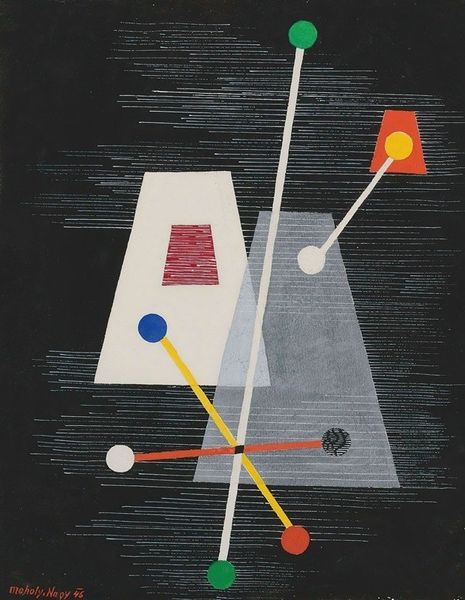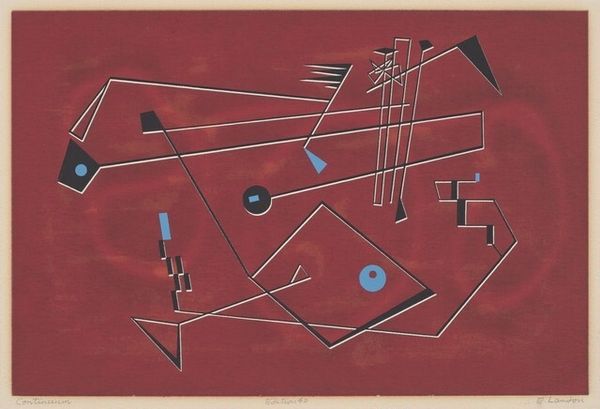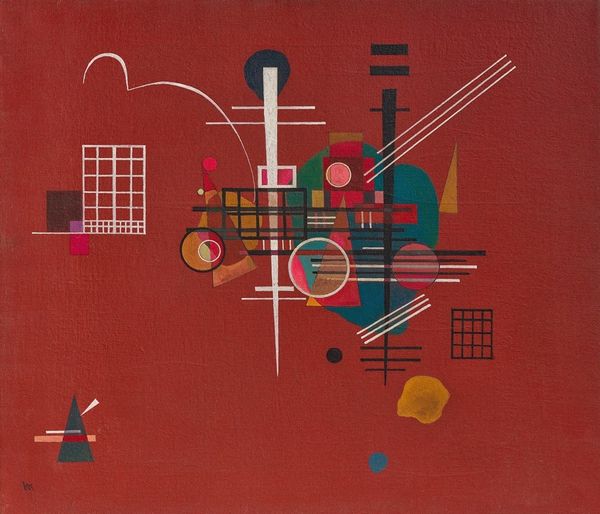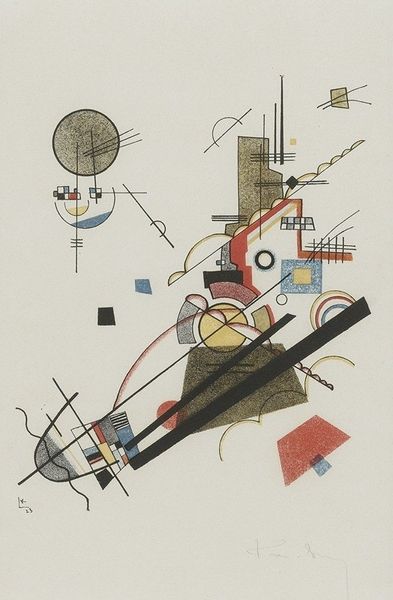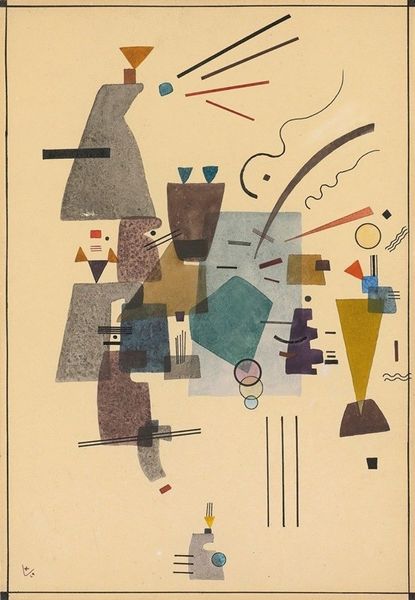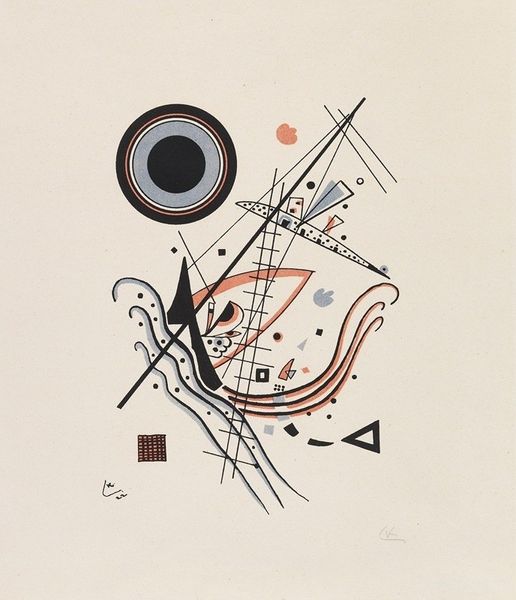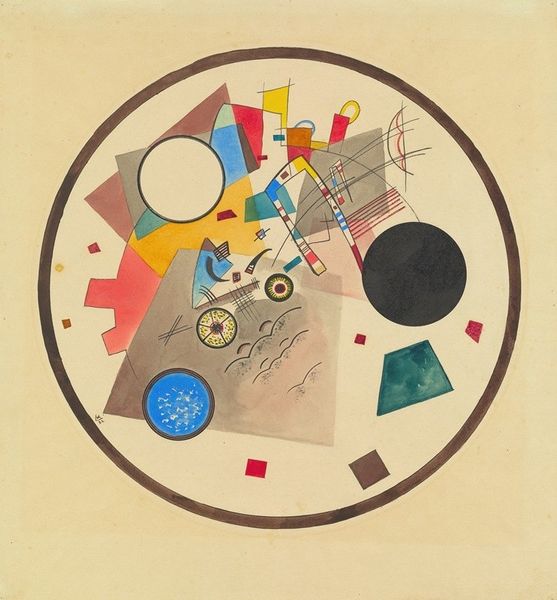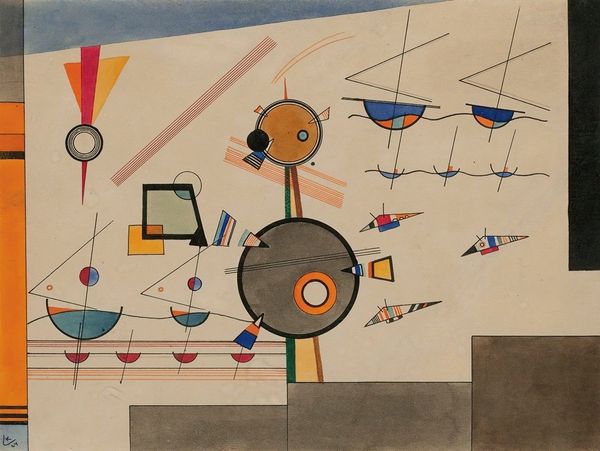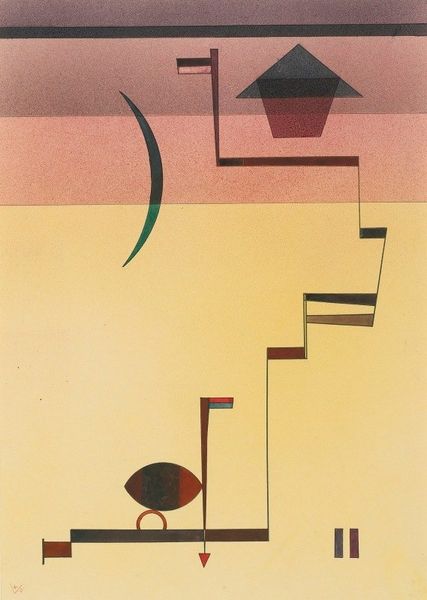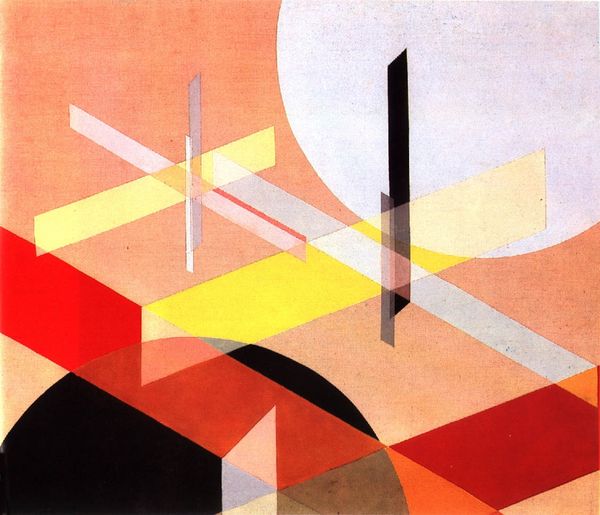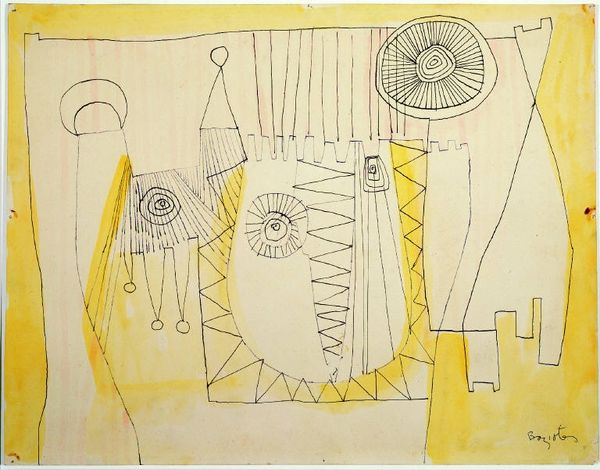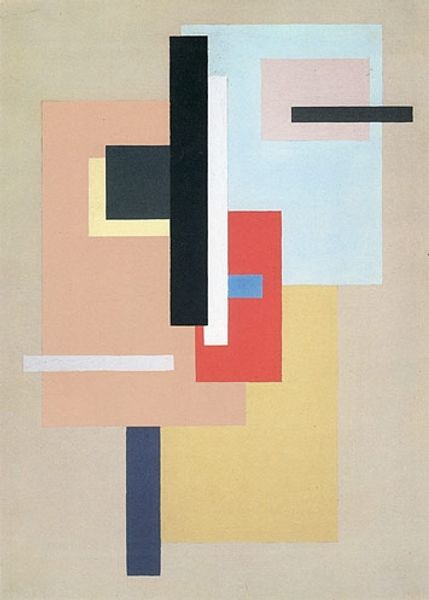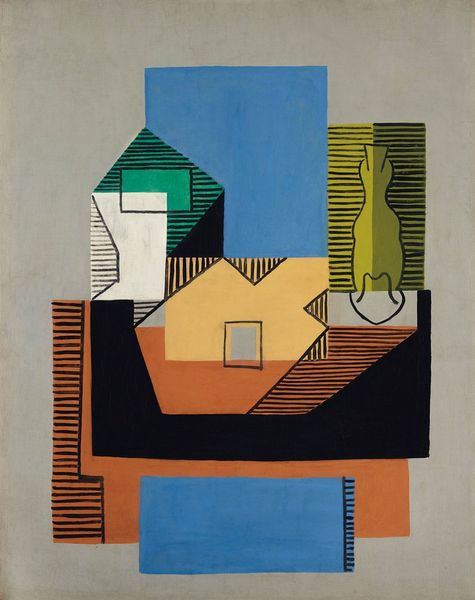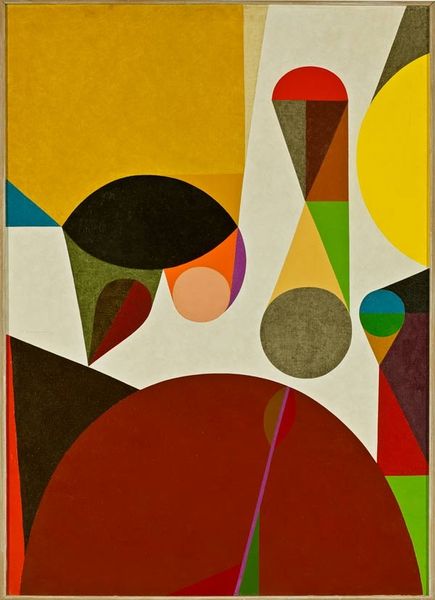
Copyright: Public Domain: Artvee
Editor: So, this is Wassily Kandinsky's "Spritze," a watercolor from 1924. It’s fascinating, all these shapes floating on this speckled background... it kind of reminds me of looking up at fireworks. How do you interpret this work? Curator: Interesting! I see it as a cartography of the psyche, perhaps. Notice how the geometric forms—the squares, triangles, and circles—interact. These aren’t just abstract shapes; they are laden with symbolic weight. Consider the triangle, often representing striving or aspiration. The circle can signify wholeness, unity. The colors themselves, don't you think they carry meaning? Editor: Absolutely! The blue rectangle feels calming, almost like a horizon, while that sharp red line cutting through the white shape seems to introduce tension. Is Kandinsky trying to evoke specific emotions with this contrast? Curator: Precisely! And observe the background. That field of tiny dots—aren't they reminiscent of primal chaos from which form emerges? It speaks to the ongoing dialectic between order and disorder, a tension present in the individual and in the cosmos. What feeling does it stir in you? Editor: Now that you mention the chaos, it feels like the shapes are trying to establish themselves amidst uncertainty. But there’s this inherent playfulness, too, a joy in the sheer act of creation. Curator: A profound insight! Do you see echoes of folk art or perhaps musical notation in his compositions? The repetition, the rhythm, and how colours 'resonate'. He sought a 'spiritual in art' connecting to a universal subconscious through colour, shape, and their interrelations. This recalls Jungian archetypes and cultural memory as forms and symbols carry diverse significations across histories. Editor: That’s incredible! I hadn't considered how deeply rooted his abstraction might be. Curator: Yes, abstraction can still speak a language, deeply encoded over time. I've learned something new today by rethinking "Spritze" through your perception of fireworks. It challenges a formal reading to reconsider temporality in visual symbolism.
Comments
No comments
Be the first to comment and join the conversation on the ultimate creative platform.
